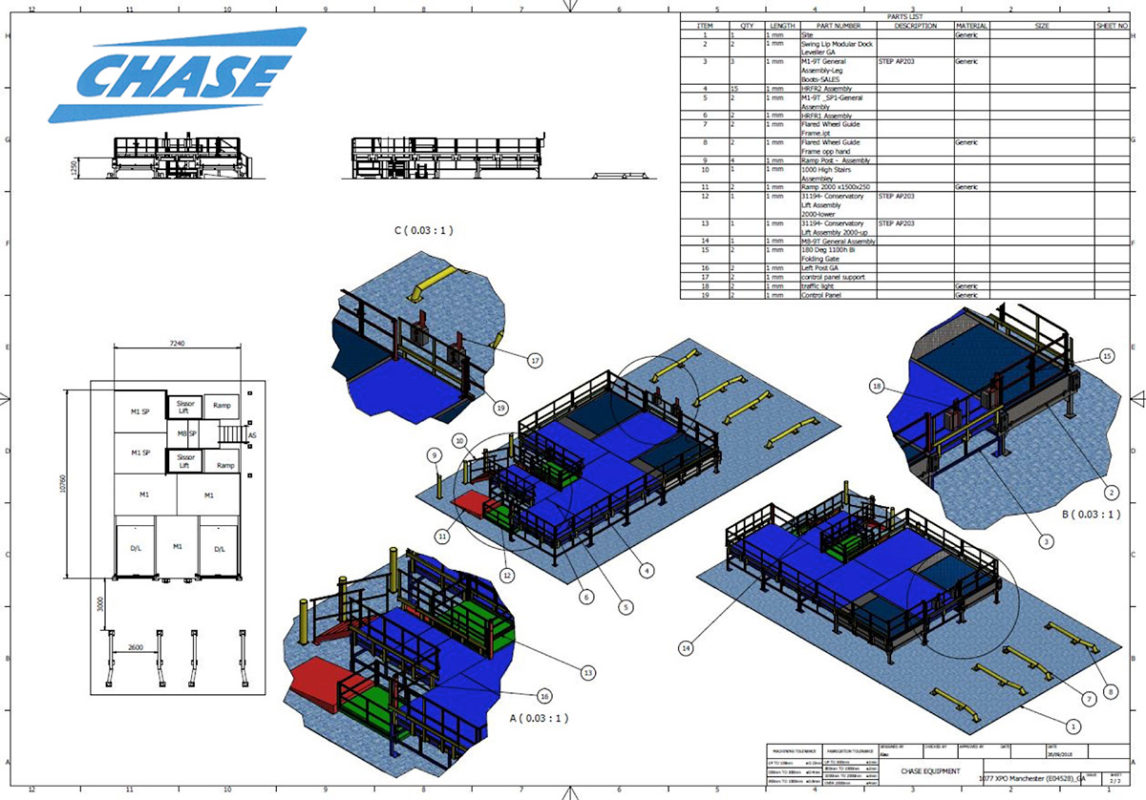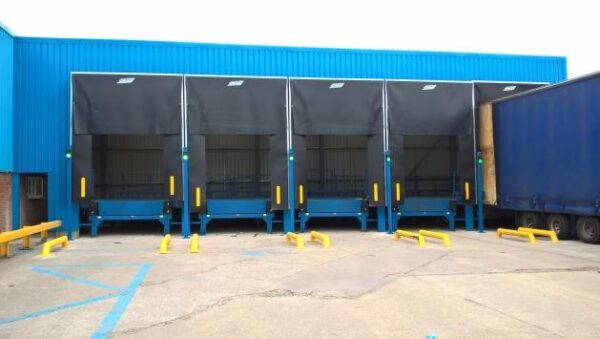
The Impact Digitisation Will Have on the Transportation and Logistics Sector
The global transportation and logistics sector had observed steady growth for more than a decade and at the start of 2020, it was said to be worth $6.6 Trillion. Amidst a slowdown in global economic growth, partly due to trade tensions between the US and China and Covid-19, transportation and logistics remains better positioned than many sectors to continue to prosper.
Current political and economic fluctuations aside, transportation and logistics face three major challenges in the foreseeable future: agility, sustainability and visibility. Companies will seek to address these challenges through digital transformation.
Digital Transformation in the Transport and Logistics Sector is Long Overdue
Over the last two decades, it has become clear that the transport and logistics sector has not experienced the same degree of digital disruption as other sectors. This tells us one thing: wholesale digital transformation is long overdue.
Today, there are several key factors that are challenging established enterprise sustainability. From strongly funded start-ups to businesses designing completely new, bespoke models to transform their offerings while partnering with other players, competition is fierce.
Business that rely on outdated technology are losing a bigger chunk of the market share to businesses who can offer more streamlined end-to-end services because of their own digital transformation. This problem is only exacerbated by a competitive marketplace.
Established transport and logistics companies are plagued by underutilisation of assets, old and inefficient manual processes and outdated customer interfaces that reduce response times, leading customers to seek the service they want elsewhere. It’s not just consideration of digital processes, how efficient the movement of goods within large warehouse facility is crucial. The loading bay is a common pinch point. Chase Equipment Ltd provides an innovative solution with its “Modular Dock” system. This provides flexibility in loading bay operation and the ability to respond quickly when volume of goods fluctuate.
The Possibilities Digital Transformation Presents the Transport and Logistics Sector
Such is the pace that modern technology evolves, it’s difficult to predict what form digital transformation will take in the coming decade. What can be certain is that automation is the key to unlocking optimal commercial potential in the logistics sector.
The ability to optimise strategies, processes, customer engagement and productivity is something that every business should utilise to operate successfully in our increasingly interconnected world.
Expect to see increasing adoption of robotics in warehouses, drones and automated vehicles for deliveries and blockchain solutions in smart contracts. However, these three changes are just the tip of the iceberg.
AI and data insights make it possible for transport and logistics companies to understand and even predict customer behaviour, allowing them to identify what they want and need with increasingly pinpoint accuracy. There is also talk of mainstream adoption of the Internet of Things which will promote a flexible working environment that is unlike anything the transport and logistics sector has seen before.
The Consequences for Your Business Model
Such exciting possibilities do not come without consequences to your business models. This evolves beyond operating with a reduced workforce, affecting almost every aspect of existing operations.
Solutions to problems including overcapacity, environmental footprint or reliance on outdated digital infrastructures that no longer meet commercial needs can be of great value to businesses across the sector, providing them with a platform to deliver stellar service levels and build their brand awareness.
Though such changes are inevitable, it must be said that for businesses to achieve seamless digital adoption employee buy-in must be achieved. Businesses must adopt a culture that emphasises pragmatic innovation. Remember, our evolving digital world isn’t about to stop, regardless of the sector!
The Solutions to the Problems Faced by the Transportation and Logistics Sector
The mainstream adoption of digital technology in the transportation and logistics sector will address three key problems: inefficient new business offerings, optimise core operations through digitisation and lack of a robust digital infrastructure.
The success of any initiatives largely depends on sound adoption. However, as we have seen with other sectors like telecommunications, banking and retail to name three, digital adoption brings a wealth of benefits which bolster companies’ ability to find supply chain solutions.
Providing that the right solutions are adopted to solve problems, the benefits of supply-chain solutions are not only advised but necessary. Such digital solutions that the transport sector should expect to see include the following:
Business Models and Service Offerings
Digital Platforms
Building robust new platforms allow companies to optimise supply chains, removing any inefficiencies that disrupt service levels. Visibility and connectivity across systems are also increased.
Advanced Analytics
Data-driven solutions can provide unique insight and create new analytics that can be used by clients to help them optimise their own operations and inefficiencies.
Transport and logistics companies can also use advanced analytics to optimise pricing and routing operations. Partial load shipment consolidation can also be achieved. Additionally, by digitally monitoring equipment health facilities, better welfare and maintenance solutions can be achieved.
System Communications
A digital infrastructure can help businesses to boost operational visibility and connectivity. This allows stakeholders to more seamlessly connect to one another through the supply chain and is vastly more efficient than existing siloed systems (management systems with vertical-only information which makes it difficult or impossible for the information to be shared.)
How Core Operations Can Be Transformed
Customer Experience
Building a front-end digital infrastructure provides customers with that convenient and much-desired one-stop-shop experience and improves internal operational visibility.
Process Automation
Digitising procurement with e-auctions, for instance, can help can ease labour-intensive operations. Not only will this allow transport and logistics companies to streamline and improve their offerings but save cost too.
Next Generation Solutions
Utilising augmented reality, artificial intelligence and robotics allows businesses to further elevate operational efficiencies across all enterprise areas. From distribution and warehousing to packaging, processes can be streamlined – and more importantly, human error all but removed.
Robust Internal Digital Infrastructure
Operational Agility
For the transport and logistics sector to keep pace without evolving digital world, solutions must be nimble to keep pace with all innovations – and maximise the benefits of sector-wide digital adoption.
Future Investment
Technological adoption is only achieved through sector buy-in and this buy-in is only achieved through awareness and benefit stressing. Once businesses understand that an investment in a flexible technology system across the whole value chain (including service delivery, customer engagement, even marketing) adoption flexible, efficient and valuable technology systems become a requisite.
Talent Attraction
Leverage digital technology and you will attract smart digital talent to help your business grow. This is vital for businesses to meet the demands of an evolving and highly skilled candidate marketplace, maintain efficiencies and deliver on the promise of providing customer value. Remember: the sector might be a little late in joining the digital revolution, but digital adoption is firmly rooted in today’s modern workforce – even more so with ambitious millennials!
The Impact that Digitisation Will Have
Implementing wholesale digitisation will revolutionise the transport and logistics sector. Though it may be in its infancy, the opportunity for future development is vast. Notably, in contrast to other sectors, like oil and gas, electric power and petrochemicals, technological innovation is largely driven by start-ups.
This benefits the transport and logistics sector because right now the lack of innovation in the transport and logistics sector presents an opportunity for ambitious tech companies to find innovative solutions to common problems.
Leading research and data company, Lux Research, who focus on helping clients create a vision for their future, recommends that transport and logistics companies view digital as a connected system and build strong foundations, such as asset monitoring and then adopt more advanced applications, like AI systems and autonomy. Any integration should focus on the value it brings to an organisation (agility, sustainability or visibility) to identify the best value proposition.
Lux also predicts that as digital transformation of transport and logistics evolves the industry, established companies will have to re-think their existing business models. For instance, the prominence of e-commerce and increase in competition will prompt major players to look to consolidate and invest in logistics verticals to build a competitive advantage and drive competition out of regional markets.
There is no doubt that digitisation of the transport and logistics sector will have a dramatic effect on how companies operate today and in the coming years. So, the question is: how prepared is your business for digital transformation?
Chase News
Christmas Opening Hours
As the holiday season approaches, we’d like to share our festive opening hours so you can plan ahead. We will…
Read More
Choosing the Right Static Yard Ramp for Your Business: A Complete Guide
Efficient loading and unloading is essential for any warehouse, logistics hub, or manufacturing facility. For many businesses, static yard ramps…
Read More
Before and After: A Closer Look at Modular Dock Transformations
When it comes to improving logistics efficiency, the installation of modular dock levellers is one of the most effective upgrades…
Read More



